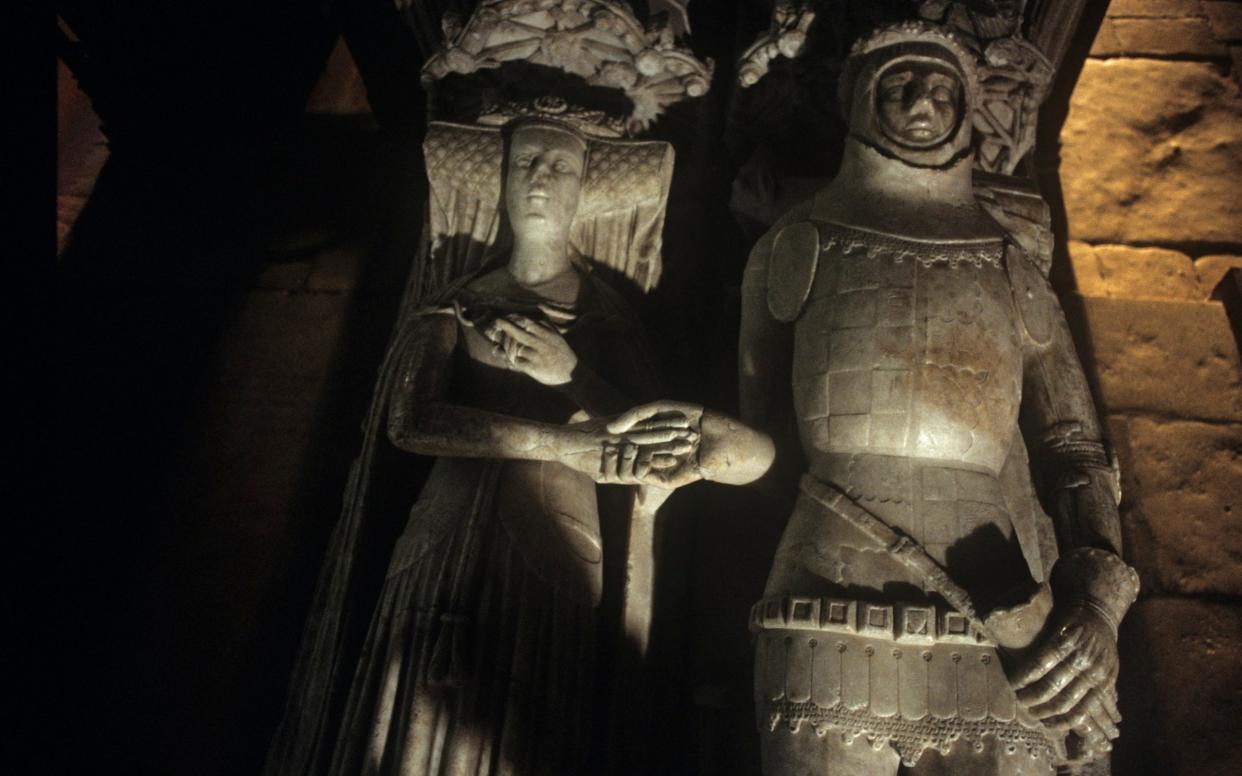Sacred Mysteries: Still holding hands faithfully in stone

In Philip Larkin’s poem "An Arundel Tomb", which ends, “What will survive of us is love,” the narrator notices, “with a sharp tender shock”, the stone earl’s hand holding the hand of the countess.
Perhaps it wasn’t an earl quite, for the late 14th‑century tomb in Chichester cathedral that inspired Larkin may show Richard Fitzalan and his wife Eleanor of Lancaster. It was probably moved from Lewes Priory, Sussex, after its dissolution in 1536.
I’ve seen it claimed that the hands being held was the invention of a Victorian stonemason, for the tomb was heavily restored in 1843. But, as Jessica Barker observes in her magnificent and original study of double tombs, Stone Fidelity, the hands were clearly joined from the first, as the attitude of their fractured forearms confirms.
It wasn’t the eccentric inspiration of one medieval mason, though, that left us this tender remembrance. There are 36 tombs surviving from the 14th and 15th centuries of husbands and wives with joined hands. The gesture “always seems to have been requested by the patrons themselves”.
Eleanor of Lancaster’s sister Blanche was buried in Old St Paul’s cathedral in London with her husband John of Gaunt in the same pose. The convention was English, for only five such tombs are known on the Continent – one of them that of Blanche’s daughter Philippa, depicted, no doubt at her request, holding the hand of her husband King João I of Portugal.
Another instance of a wife’s initiative was that of Katherine Clifton, who, around 1450, was the richest person in Norwich, no small achievement. She was a widow and was later buried with her husband, Sir Simon Felbrigg, in the choir of the Blackfriars in Norwich. But she had earlier ordered a double monument to be made for her and her first husband, Ralph Green, who had died in 1417 after three years of marriage.
Katherine is depicted lying next to him in the church of St Peter in Lowick, Northamptonshire. The detail of their clasped hands is very noticeable, for his hand bends back to hold, from the side, her right hand as it is offered above the space between them. This fulfilled the contract she made with the masons: “lun des ditz ymages tenant lautre par la main” – one of the said images should hold the hand of the other.
Dr Barker, a lecturer in medieval art history at the Courtauld, is well aware of the danger of letting our contemporary ideas of romantic love limit the intentions of the artists who made such sculptures and of the patrons who ordered and paid for them. Katherine Clifton paid £40 for hers, including painting, gilding and transport.
For married couples, holding hands was clearly connected with their wedding ceremony. In the sacrament, the visible clasping of hands to signify consent to the spouses’ contract brought unseen graces. Holding hands was, in the thinking of St Augustine for example, not a natural symbol (as a smile or tears might be) but a verba visibilia, a visible word, chosen to express intention and feeling.
Dr Barker illustrates the sacramental concept with a remarkable 15th-century manuscript representation of the seven sacraments. To each sacrament, a thin red stream of Christ’s sanctifying blood runs from his body on the cross. One stream runs on to the clasped hands of a couple being joined in marriage.
To the medieval bonds of law and fealty that hand-clasping signified, this sacramental dimension added a reference to the love between Christ and his Church. That was not what Larkin explicitly meant.


